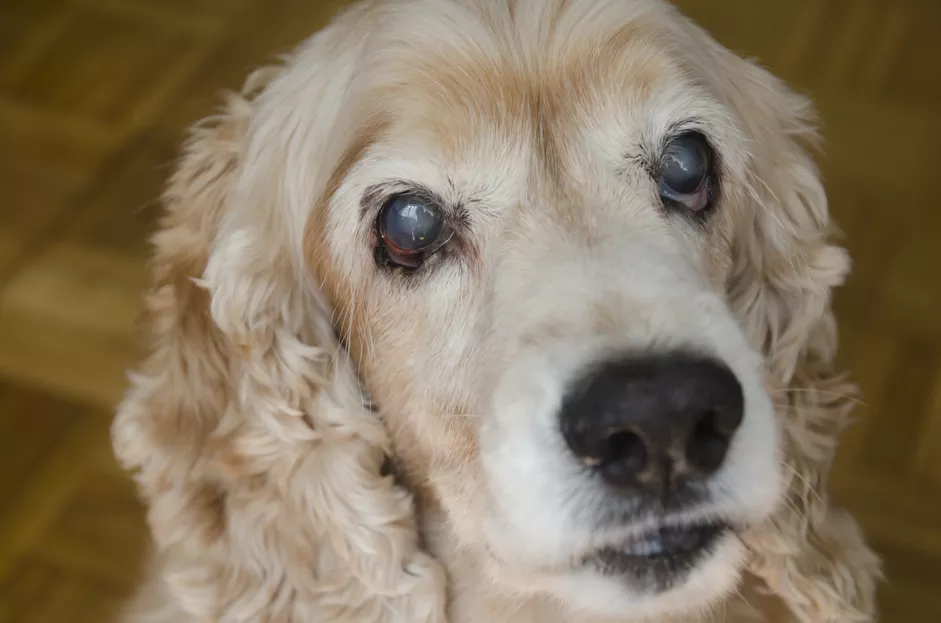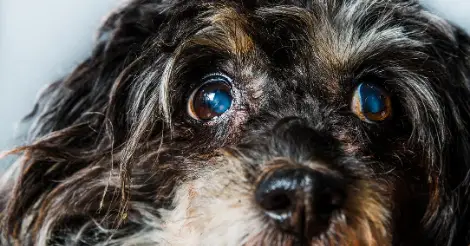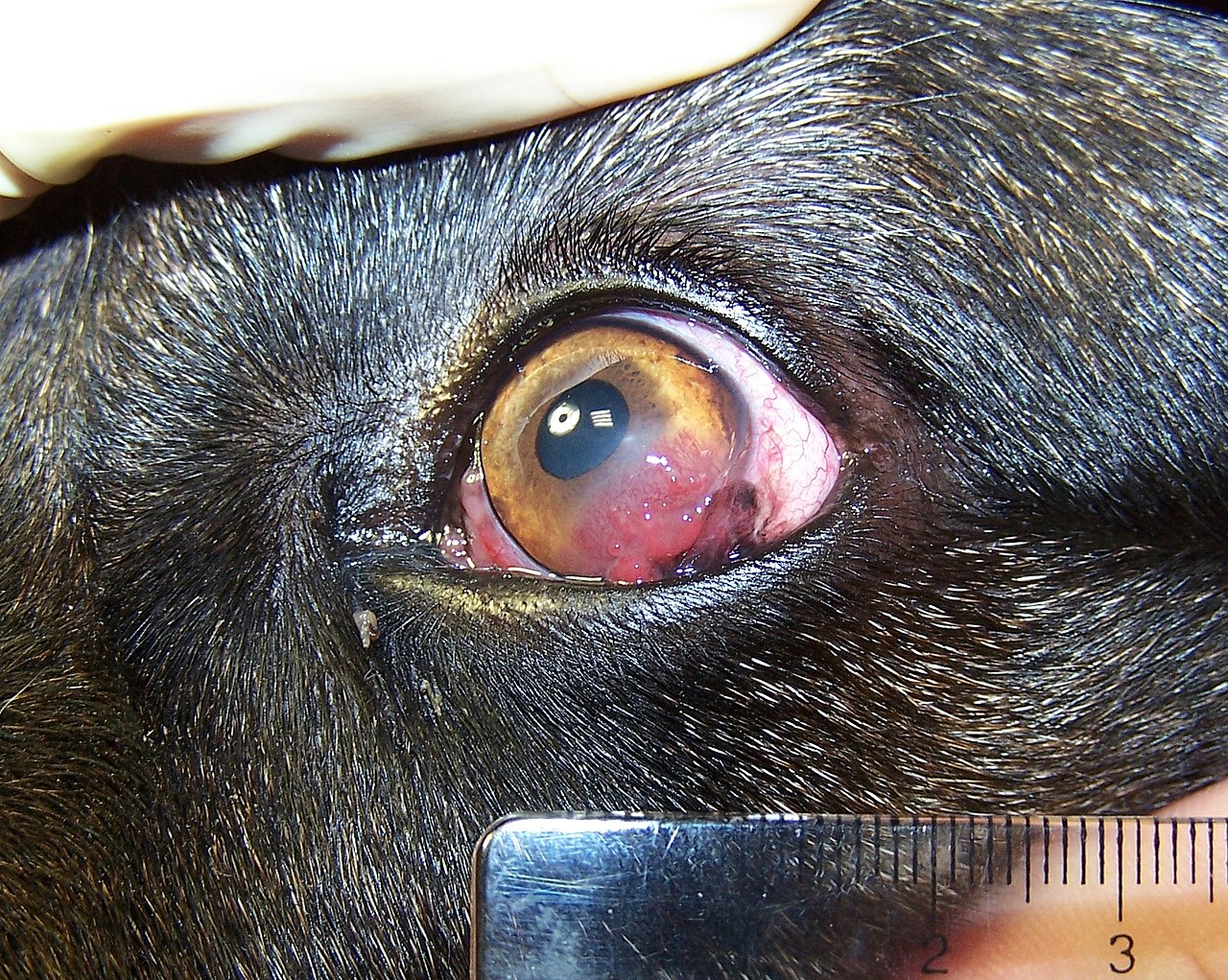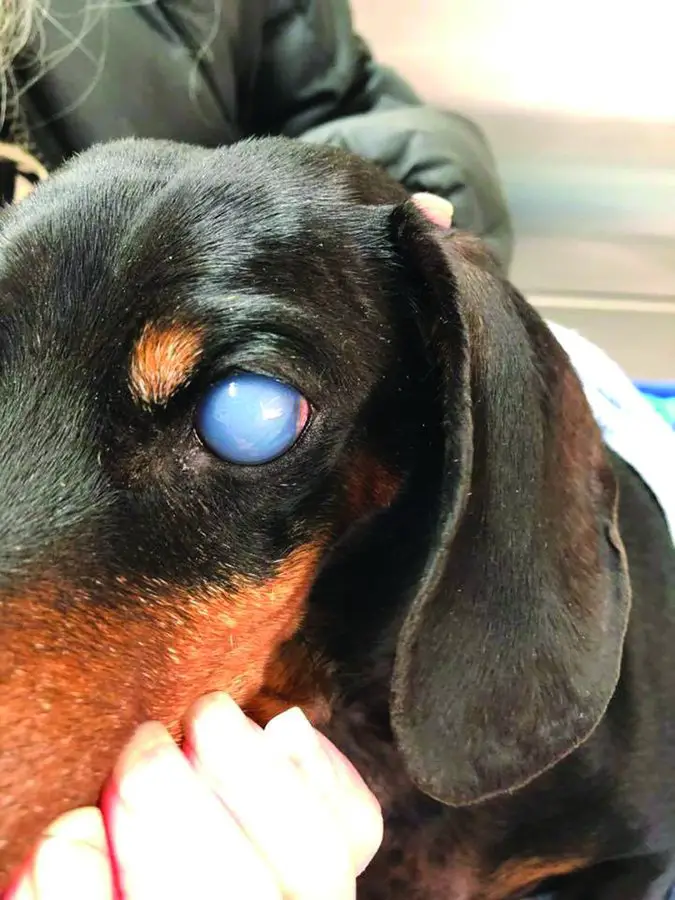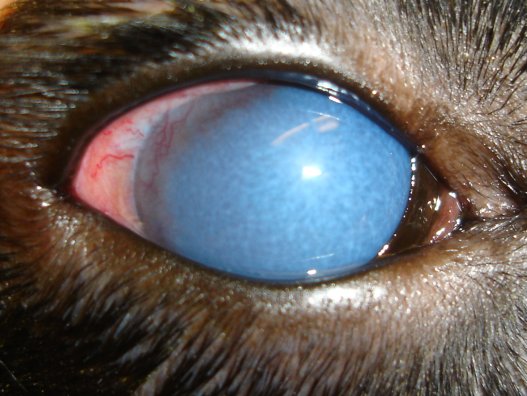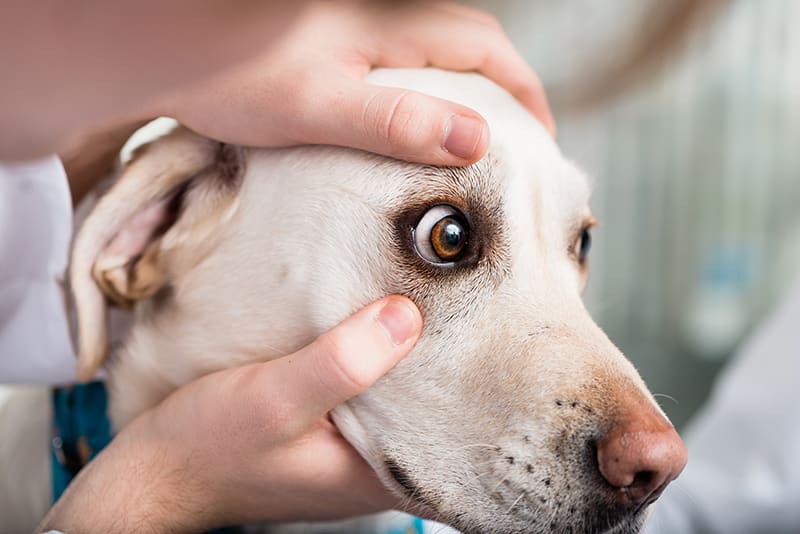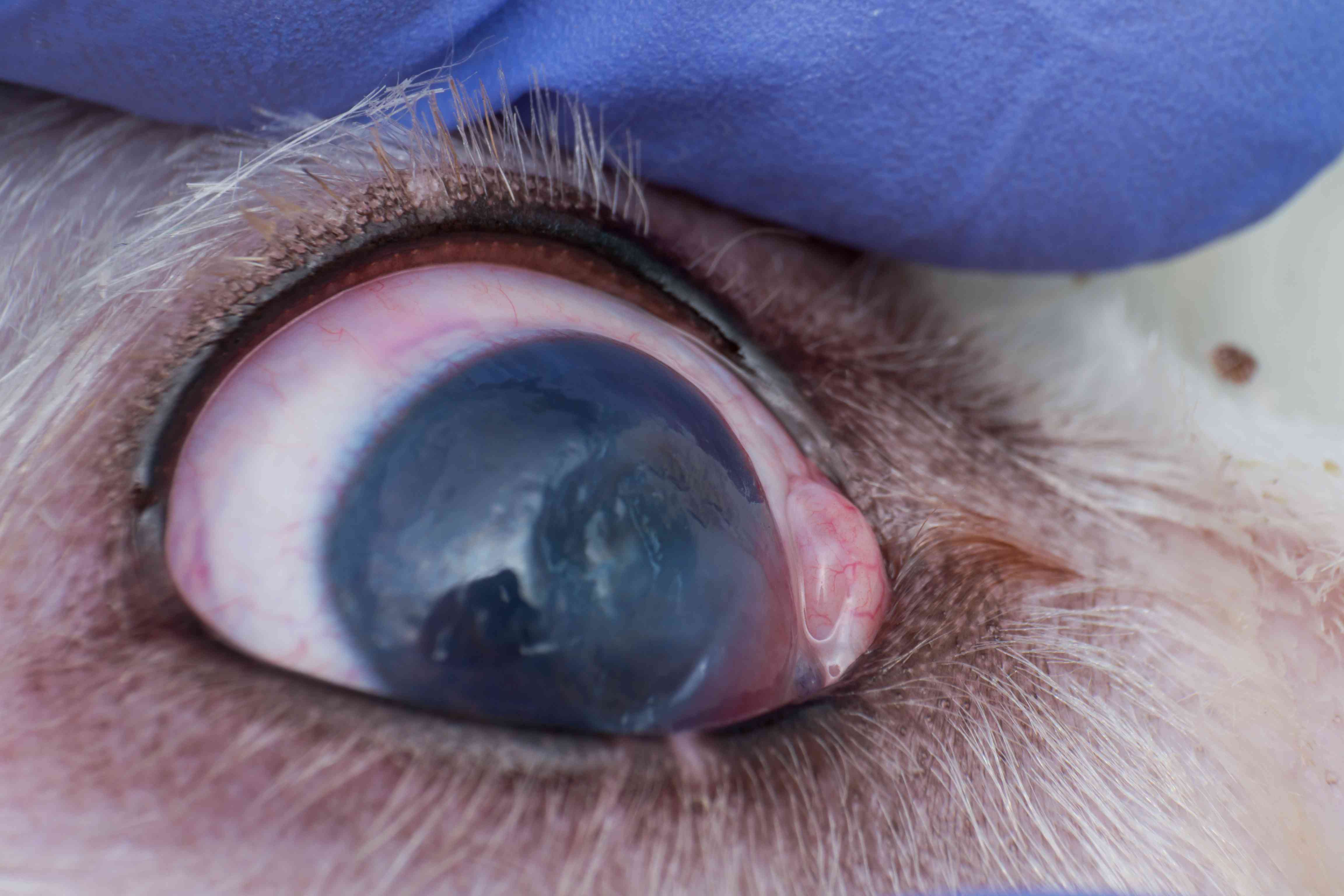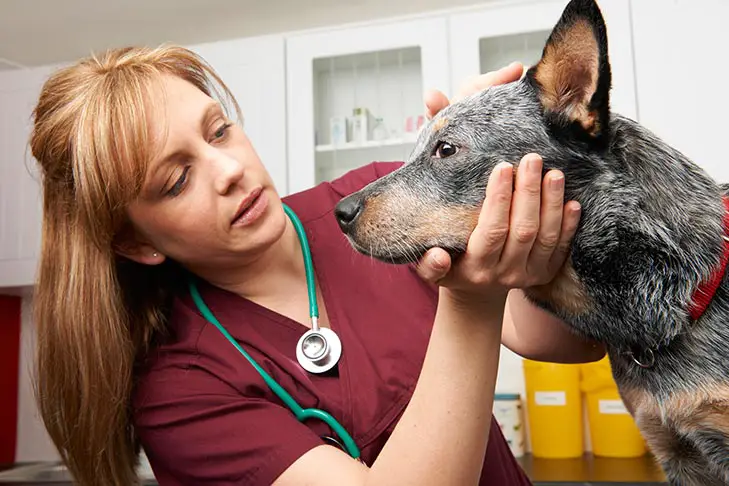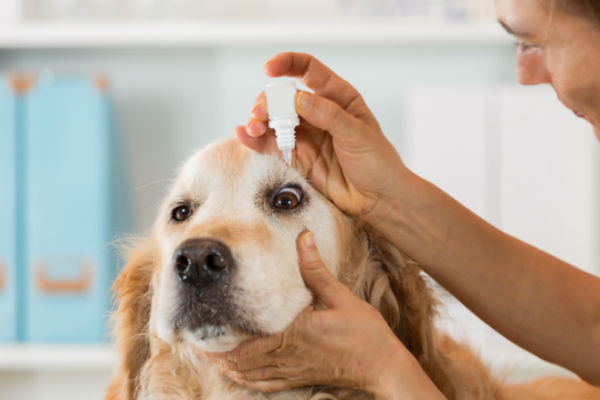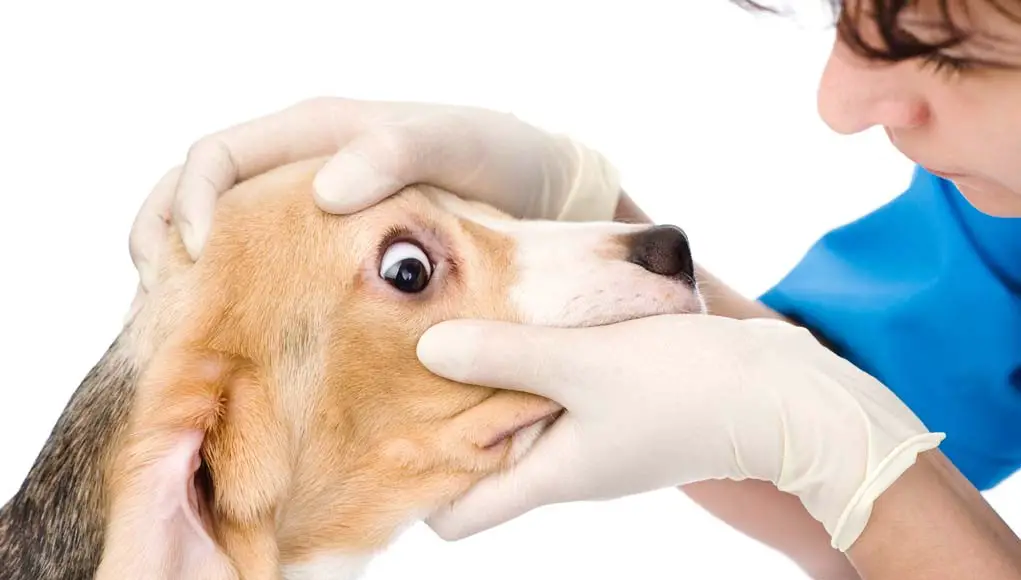If eyesight is the window to the soul, it’s no surprise that cloudy eyes in dogs cause concern. After all, we don’t want our dogs to become blind or uncomfortable. When you see dogs with cloudy eyes, it could be due to the natural aging process. However, cloudy eyes in dogs can be a sign of various eye problems.
It can be difficult to distinguish between what is normal and what is abnormal. While your vet is the best source of information about your dog’s eye health, it’s useful to understand what kinds of problems can cause a cloudy appearance in your dog’s eyes and any other symptoms you should be aware of.
Cataracts and nuclear sclerosis are the most common causes of cloudy eyes in senior dogs. However, some other conditions can cause cloudiness in your dog’s eyes and necessitate immediate veterinary attention.
What exactly are cloudy eyes in dogs?
Cloudy eyes in dogs are commonly characterized by a hazy film or discoloration covering the eyes. The cloudiness may or may not impair your dog’s vision. Some cloudy eye conditions can cause pain, while others do not. Your vet will require to conduct a thorough eye exam to determine the cause of the cloudiness.
Cloudy eyes in dogs can be a sign of progressive eye disease or a natural part of the aging process. Cloudiness usually appears on the cornea of the eye. The cloudiness is visible because it is usually found on the cornea, the clear dome in front of your dog’s eyes.
Signs of cloudy eyes in dogs
The symptoms of cloudy eyes differ depending on the cause of the condition. In addition to the clinical visual cue of cloudiness, here is a list of symptoms associated with various causes to alert you that your dog may have a condition. Your dog will not exhibit all of the symptoms. Nevertheless, if you notice any changes in your dog’s eyes, contact your veterinarian.
Symptoms
- Cloudiness of the eyes
- Rubbing of the eyes
- Red, irritated whites of eyes
- Eye swelling or bulge
- Trouble finding items, food, bedding
- Discharge
Cloudiness of the eyes
Cloudiness in the eyes can be seen in gray, blue, red (rarely), or white tones with varying degrees of opaqueness. The colors could indicate a variety of causes for the cloudy condition, including the following:
- Gray or bluish: Glaucoma, lenticular sclerosis, or corneal endothelial degeneration can all cause gray or bluish vision
- Reddish: Corneal ulcer (often reddish, could also be gray/blue)
- Silvery white: Corneal dystrophy (silvery-white/gray)
- Milky white: Cataracts are milky white
Rubbing of the Eyes
If you notice your dog pawing or rubbing one eye and it appears cloudy, it may have a corneal scratch or ulcer.
Red, irritated whites of eyes
In addition to bluish cloudiness, if your dog’s eye whites appear inflamed, this could be a sign of glaucoma.
Eye Swelling or Bulge
If your dog’s eyes are cloudy with a bluish tint and there appears to be swelling or bulging inside the eye, glaucoma could be a sign.
Trouble finding items, food, bedding
Check the eyes for cloudiness, which could impede vision, if your dog has difficulty finding items such as food and water and its favorite bed or furniture.
Discharge
If your dog’s eyes have yellowish or green discharge in addition to cloudiness, it may have a corneal ulcer or an infection caused by the corneal ulcer. It usually happens in one eye, not both.
Causes of cloudy eyes in dogs
Several ophthalmic conditions can cause a dog’s eyes to appear cloudy, some of which are more serious than others. Many people initially believe that cataracts cause cloudiness. Although this is sometimes true, cloudy eyes can also be caused by other eye problems. The following are some of the conditions that can cause cloudy eyes.
Nuclear Sclerosis in Dogs
Some cloudiness is normal for a dog’s age. According to veterinary ophthalmologists, most dogs develop nuclear sclerosis, a haze within the lens similar to cataracts. Unlike cataracts, this condition rarely impairs vision. However, focusing ability may deteriorate.
Cataracts and nuclear sclerosis are frequently confused. Both conditions make the lens appear cloudy, but there are some distinctions. Nuclear sclerosis causes cloudy, bluish discoloration in your dog’s eyes instead of cataracts, which are white and opaque.
More importantly, unlike cataracts, nuclear sclerosis (also known as lenticular sclerosis) does not significantly impair your dog’s vision. It usually affects both eyes simultaneously. The two conditions appear different when your veterinarian examines your dog’s eyes with an ophthalmoscope.
Nuclear/ lenticular sclerosis changes the eye lens that occurs naturally as people age. Although there is no need for treatment because the condition does not cause serious problems, it is good to discuss your dog’s aging eyes with your veterinarian to know what to expect as your dog ages.
It is common for dogs with nuclear/lenticular sclerosis to develop cataracts. If your dog develops nuclear sclerosis, your veterinarian will want to check for cataracts regularly.
Cataracts in Dogs
Cataracts develop in dogs in the same way that they do in humans. This white, milky change in your dog’s lens is caused by abnormal lens metabolism. The lens in both dog and human eyes functions similarly to a camera lens, focusing light on a film at the back of the eye called the retina, which the brain then processes to form a picture of the world around it.
Water and protein make up the lens. These materials are systematized in a very specific way, and when the proteins begin to clump together, either due to age or trauma, cataracts can form. These protein strands slowly obscure the lens, making it difficult for your dog to see and, in some cases, result in total blindness.
Cataracts in dogs can be caused by several factors, including age, trauma, metabolic diseases such as diabetes, and genetics.
Some dogs are more prone to hereditary cataracts than others. Depending on the type of inherited cataracts, these can occur when the dogs are puppies or as they age, and they usually affect both eyes.
The Australian Shepherd, Boston Terrier, French Bulldog, Bichon Frise, American Staffordshire Terrier, Miniature Schnauzer, Poodle, Havanese, Silky Terrier, Cocker Spaniel, Siberian Husky, Labrador Retriever, and West Highland White Terrier are among the breeds most commonly affected.
Cataracts can make your dog’s vision blurry. Sometimes they do not cause any additional problems aside from vision loss, but other times they can lead to a much more serious problem – glaucoma. Prompt diagnosis is critical. Cataracts can be surgically removed, but it is best to do so early in their development.
Glaucoma in Dogs
When the pressure inside the eye increases, Glaucoma in dogs occurs, causing damage to the eye’s structures. This condition is painful, and extremely high intraocular (inside the eyes) pressure is considered a veterinary emergency because it can result in permanent optic nerve damage and vision loss.
Among the two types of glaucoma, primary glaucoma is inherited. Secondary glaucoma is caused by other disorders such as cataracts, a lens luxation or subluxation (where the lens shifts position in the eye), cancer, inflammation, or retinal detachment.
Many dog breeds, including Beagles, Cocker Spaniels, English Cocker Spaniels, Chow Chows, Basset Hounds, Russell Terriers, Chinese Shar-Pei, and Arctic Circle breeds like the Siberian Husky and Norwegian Elkhound, are affected by inherited glaucoma.
Glaucoma does not only cause cloudy eyes in dogs. You may also detect a bulge in the eye, a blue or red tint to the cloudiness, increased discharge, squinting, a dilated pupil, and, most concerningly, loss of vision. Dogs are adept at compensating for vision loss in one eye by relying on the other, making it difficult to detect.
A tonometer is typically used to diagnose glaucoma. It is critical for your veterinarian or a veterinary ophthalmologist to determine whether your dog has primary or secondary glaucoma, as treatment may differ. A thorough and timely examination is also essential because a dog with glaucoma in one eye is at a high risk of acquiring glaucoma.
When medication fails, your veterinarian may recommend laser therapy, eye removal, drainage implants, gentamicin injections, and cyclocryotherapy (a technique operated to reduce intraocular liquid production.) A surgical technique may be required in severe cases to address the cause of secondary glaucoma or to make your dog more comfortable.
Dry Eye in Dogs
Some cloudy eyes in dogs appear to have actual clouds in the lens, whereas others may appear to have something on the surface of your dog’s eye clouding it up. Severe dry eye can cause corneal ulceration and scarring, which falls under the second category.
Dry eye, known as keratoconjunctivitis sicca, happens when your dog’s body produces insufficient tears. Tears are required for lubrication and overall eye health, as the aqueous solution is how nutrients are delivered to your dog’s eyes. The surface of your dog’s eyes becomes irritated when she does not produce enough tears.
Ulcers can form, leading to perforation of the eye in severe cases. The eye’s surface can scar in chronic cases of dry eye, giving it a cloudy, dull appearance. An abnormal immune system reaction causes most dry eye cases. Yorkshire Terriers and Pugs, for example, are more prone to dry eye than others.
Aside from cloudy eyes, there are other signs of dry eye. Mucous discharge, redness around the eye whites, swelling of the tissue on the surface of the eyelids and eye, and squinting or excessive blinking are some of the symptoms.
Dry eyes are frequently associated with autoimmune inflammation of the tear glands and can be a chronic, life-long condition. An eye exam and, in some cases, a test to measure the amount of tear production and moisture are used to make a diagnosis.
Fortunately, dry eye can usually be treated with tear-stimulating medications and topical antibiotics, and in severe cases, surgical options to promote increased tear production are available. Dogs with dry eyes can be helped if diagnosed early, treated consistently, and regularly monitored by a veterinarian.
Also Read: Irish Red And White Setter- Best Breed Guide For Your New Dog!
Ulcers in Dogs
Eye ulcers from dry eye, trauma from rubbing the eye on a rough surface or being scratched by another animal, other ophthalmic problems, such as entropion (inward folding eyelids) or distichia (problematically placed hairs), or bacterial or viral infections, can all cause a cloudy appearance in your dog’s eye.
Ulcers are sores on your dog’s cornea (the membrane on the front of the eye). They may appear bluish, reddish, or simply a haze on the surface of your dog’s eye as they progress. Like other serious eye troubles, Corneal ulcers can be hurting and are frequently accompanied by discharge and squinting. They can cause severe damage and even perforation if infected.
The vet will use a fluorescein stain test to diagnose a corneal ulcer, and samples may be taken to be cultured. Ulcers are typically treated with medicated drops to prevent infection and relieve pain. In harsh cases, surgery may be required to save your dog’s eye, so take your dog to the vet as soon as you glimpse signs of ocular discomforts, such as squinting or rubbing at the eye with a paw.
Anterior Uveitis in Dogs
Anterior uveitis can also cause cloudy eyes in dogs. The uvea is the eye part that consists of the choroid, ciliary body, and iris – the tissue in front of the eye. Anterior uveitis is an inflammation of one or more of these structures, resulting in irreversible vision loss.
Redness, discharge, squinting, an oddly shaped pupil, eyeball swelling, excessive tearing, and a cloudy or dull appearance are all symptoms of anterior uveitis.
Several factors can contribute to this painful condition, including autoimmune disease, cancer, trauma, metabolic disease, parasites, fungal, viral, and bacterial infections. Your veterinarian may perform a battery of diagnostic tests to narrow down the culprit. Depending on the cause, treatment may include eye drops, eye ointments, and oral medications.
Corneal Dystrophy in Dogs
Some dogs develop corneal dystrophy, which causes their cornea to appear opaque and cloudy. This common condition is inherited and is classified into three types based on where it occurs in the eye: epithelial, stromal, and endothelial.
- Epithelial corneal dystrophy: The superficial layers of the cornea are affected by corneal epithelial dystrophy. This condition is unpleasant, and Shetland Sheepdogs appear to be the most vulnerable breed affected by this.
- Stromal corneal dystrophy: The mid-layer of the cornea is affected by corneal stromal dystrophy. This condition is more common in Airedale Terriers, Cocker Spaniels, Cavalier King Charles Spaniels, Samoyeds, and Weimaraners.
- Endothelial corneal dystrophy: Endothelial corneal dystrophy impacts the deepest layer of the cornea. Dogs suffering from this condition are typically middle-aged or older Boston Terriers. Chihuahuas and Dachshunds are predisposed genetically. Corneal ulcers can result from this type of dystrophy.
The veterinarian will use a bright-light microscope to determine the type of corneal dystrophy your dog has and a fluorescein stain to examine the details of the eye and may prescribe antibiotic eye medications. Cloudy eyes may continue to appear. Both epithelial and endothelial corneal dystrophy can result in ulcers, but there is no cure for corneal dystrophy. This condition does not usually result in impaired vision.
Treating and diagnosing cloudy eyes in dogs
A vet is an ideal person to diagnose the cause of your dog’s cloudy eyes and treat it. The primary care physician might refer you to a veterinary ophthalmology specialist for further treatment. Nonetheless, know about the common methods adopted by the vet in curing your crawling buddy.
Diagnosing cloudy eyes in dogs
To determine the cause of ocular cloudiness, veterinarians perform eye exams using a variety of tools, including:
- Techniques for non-invasive high-resolution imaging
- A slit-lamp ophthalmoscope
- Drops to dilate the pupils
- Fluorescein and other special stains
- The tonometer (typically used for glaucoma testing)
- Additional ophthalmic lights and filters
If your dog is detected with lenticular sclerosis, your veterinarian will keep an eye out for the development of cataracts. Glaucoma may develop if cataracts are not treated.
Treatment
If the eye disease is detected early, treatment for cloudy eyes in dogs has a better chance of success. The cause of the cloudiness determines the treatment for cloudy eyes in dogs. Some of the common treatment methods are:
- There is no cure for lenticular sclerosis, nor is treatment required.
- Cataracts can only be treated surgically.
- To reduce intraocular pressure, glaucoma is treated with topical eye medications.
- Corneal ulcers are typically treated with topical medications, but severe ulcers may necessitate surgical intervention.
- There are few treatment options for corneal endothelial degeneration. Medications can be used to provide palliative care. A veterinary ophthalmologist may be able to provide some specialized surgical options.
- A special diet to control cholesterol and calcium levels may be used to treat corneal dystrophy. Topical medications may also be used to treat this condition and its complications. In some cases, surgery may be required.
How to avoid cloudy eyes in dogs?
Although cloudy eyes in dogs cannot always be avoided, you can take steps to protect your dog’s eyes as much as possible. Most eye problems and other health problems in dogs can be avoided by taking them to the vet onetime or twice a year for a routine veterinary exam. It allows the vet to detect and treat problems earlier, which is especially important as your dog ages.
Though you cannot prevent aging-related eye cloudiness, such as lenticular sclerosis, you can be aware of some other preventative measures:
- Cataracts: Although cataracts are inherited and cannot be prevented, it is useful to know that diabetes mellitus can lead to cataract development. Help prevent it by keeping your dog’s diabetes under control.
- Glaucoma: You and your veterinarian can manage the eye diseases that cause glaucoma.
- Corneal ulcers are most likely avoidable if your dog is protected from traumatic injuries. Additionally, use an e-collar, or Elizabethan collar, as a temporary aid to keep your dog from rubbing his eyes due to other eye problems.
- Corneal endothelial degeneration is commonly associated with aging, but it can also occur due to other eye problems. You may be able to avoid it if you detect and treat other eye problems in your dog.
- Corneal dystrophy: With your veterinarian’s help, you may be able to prevent this by controlling your calcium and cholesterol levels. Your veterinarian can perform routine lab tests to check these levels regularly. Routine lab work is an excellent way to keep track of your dog’s overall health.
Cloudy eyes in dogs: What to Expect
The prognosis for dogs with cloudy eyes is usually favorable; however, this depends on the condition’s cause. Even if your dog’s cloudy eyes cause blindness, they can live a long and happy life.
Because eye conditions can develop and change quickly, you should always consult your veterinarian if you notice anything unusual about your dog’s eyes. With tests, your veterinarian can generate a list of possible diagnoses and determine whether this is a harmless age-related change or something that will necessitate medical or surgical therapy to prevent your dog’s eyesight from deteriorating.
Takeaway
The treatment for your dog’s cloudy eyes is determined by the cause, your dog’s age, the severity of the problem, and your dog’s discomfort. If treatment is required, your veterinarian will lay out a plan to treat your dog’s cloudy eyes.
In addition to cloudiness, keep an eye out for other signs of eye concerns, such as squinting, increased discharge, or a change in your dog’s eye shape, size, color, or vision, and contact your vet as soon as feasible if you notice redness, squinting, or thick discharge from your dog’s eye.
Dogs, like humans, can develop cloudy eyes in one or both of their eyes. The majority causes of vision loss in dogs develop gradually over months or years. This means you’ll have more time to figure out why your dog is going blind, whether it can be treated, and how to manage its changing needs.

